
CelluCov
Increase Accessibility to Healthcare CelluCov aims to provide sustainable solutions that are accessible to everyone, without sacrificing quality or performance of the device. While eco-friendlier manufacturing processes are often more…

Cost-Effective HIV Viral Load Assay
To design a cassette for a cost effective and fast HIV viral load assay to increase testing accessibility in areas such as sub-Saharan Africa where HIV rates are highly prevalent.

URMC Geriatric Oncology
The Geriatric Oncology Research Team at URMC wants to better understand chemotherapy tolerability in vulnerable older adults.

COVID-19 Survey Analysis to Understand the Community’s Socioeconomic Needs
Rochester Monroe Anti-Poverty Initiative (RMAPI) launched a new survey to better understand the impact of COVID- 19 on community member’s income and basic needs as well as what community members need to be safe and financially secure. The goal of the project was to analyze the survey and responses to inform United Way which kind of assistance needs to be provided, and what features of living necessities are more important for the respondents.

Public Perception on COVID-19 Vaccines
The goal of the project was to explore public perception on COVID-19 vaccine by analyzing social media platform data (Twitter).

Identify Mental Health Issues during COVID-19 using Twitter
The project aim was: 1) Understand how the degree of mental health issues changed over time and space during COVID-19; 2) Find out what topics are people concerned about, and 3) Infer what group of people are more likely to have mental health issues.
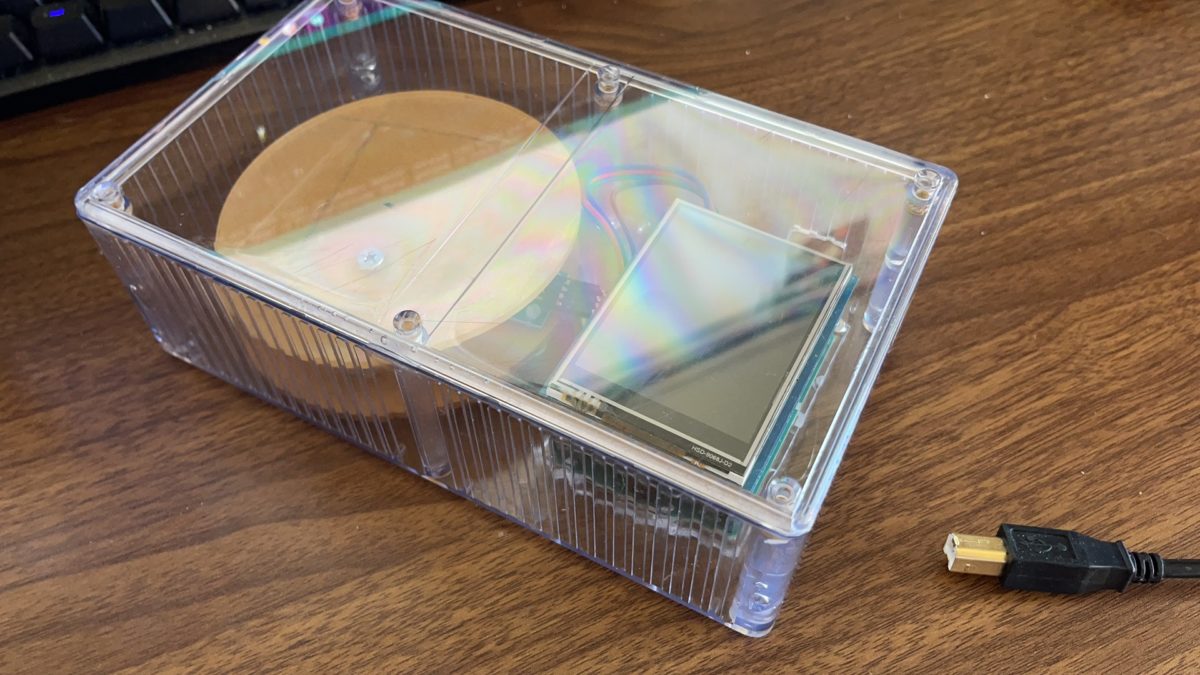
Smart Water Filter and Dispenser
A smart water dispenser system able to dispense drinking water to the user while keeping track of daily intake amounts.

Wearable Fitness Tracker
Stay motivated to keep up with your fitness goals by taking care of a virtual pet!
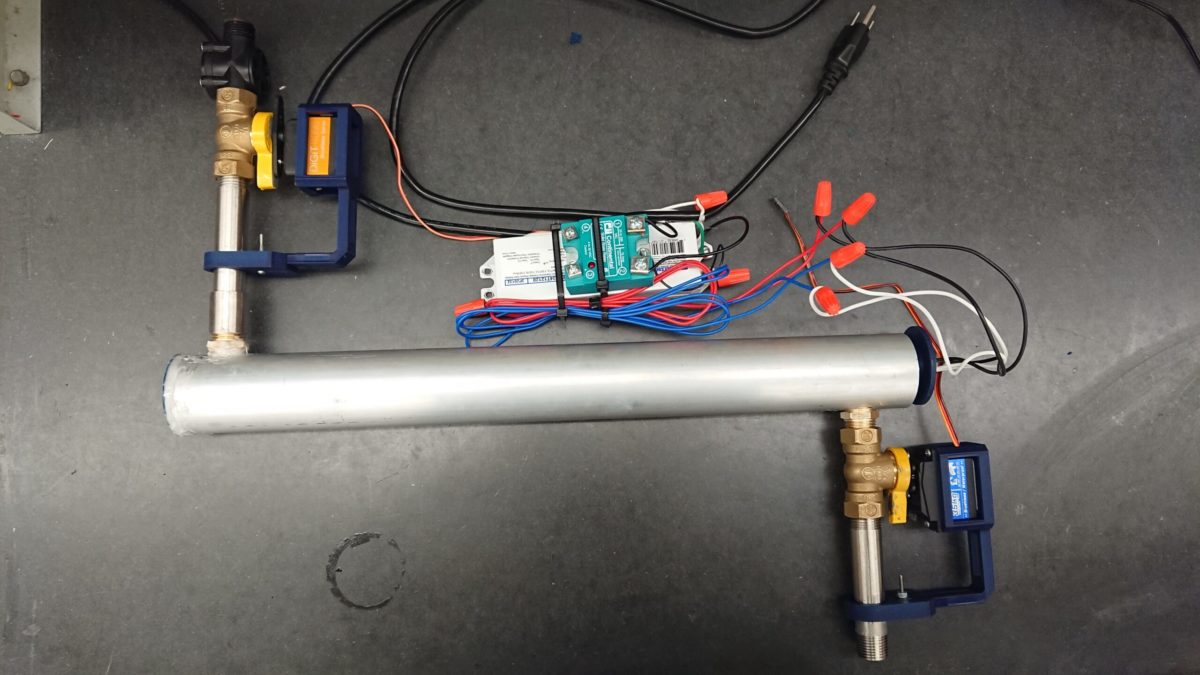
Water Sterilizer Control System
This system is a cheaper alternative option to chemical water treatment meant to sterilize drinking water with UV-C light by controlling water flow in order to achieve proper irradiation time.
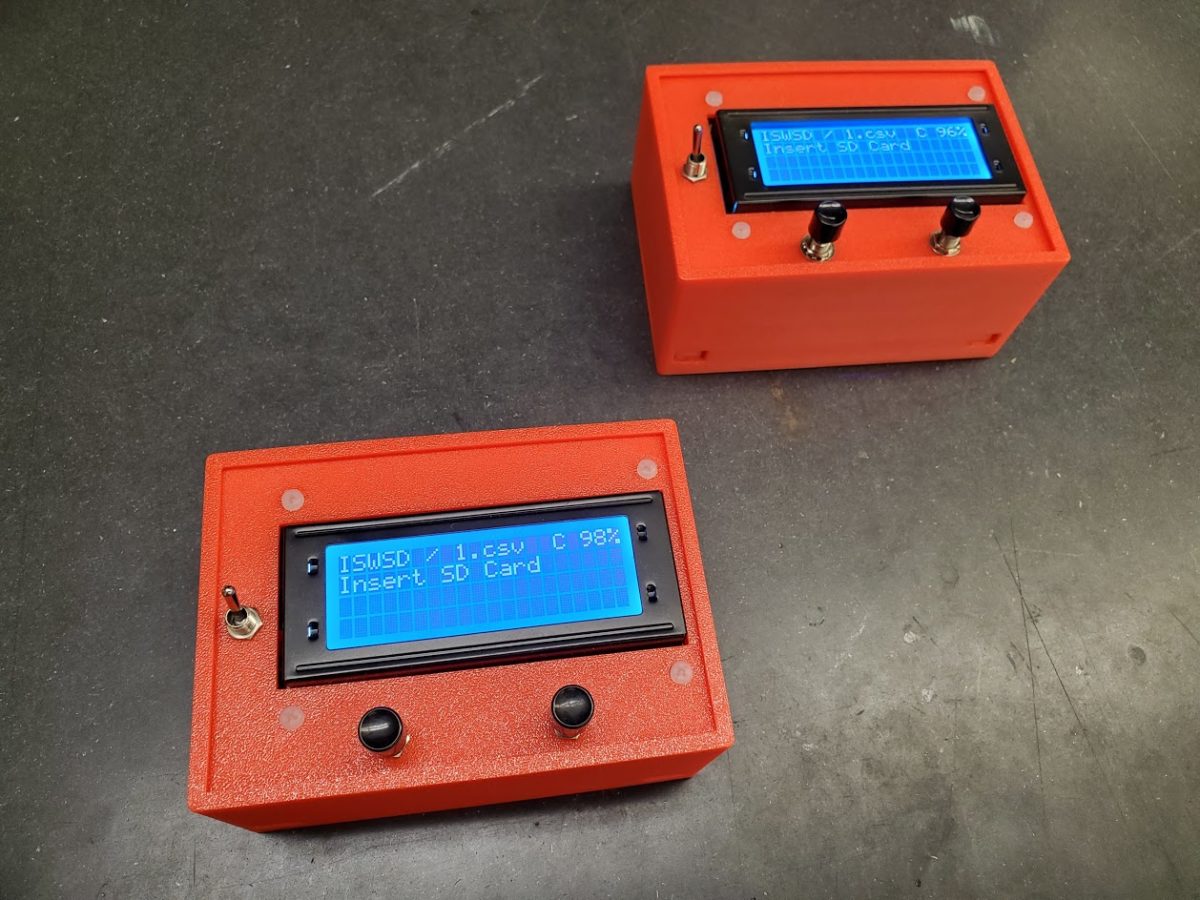
Surveying Altimeter for Water System Design
The surveying altimeter is a cheap, portable, and easy-to-use method of determining the relative height differences between points of interest.
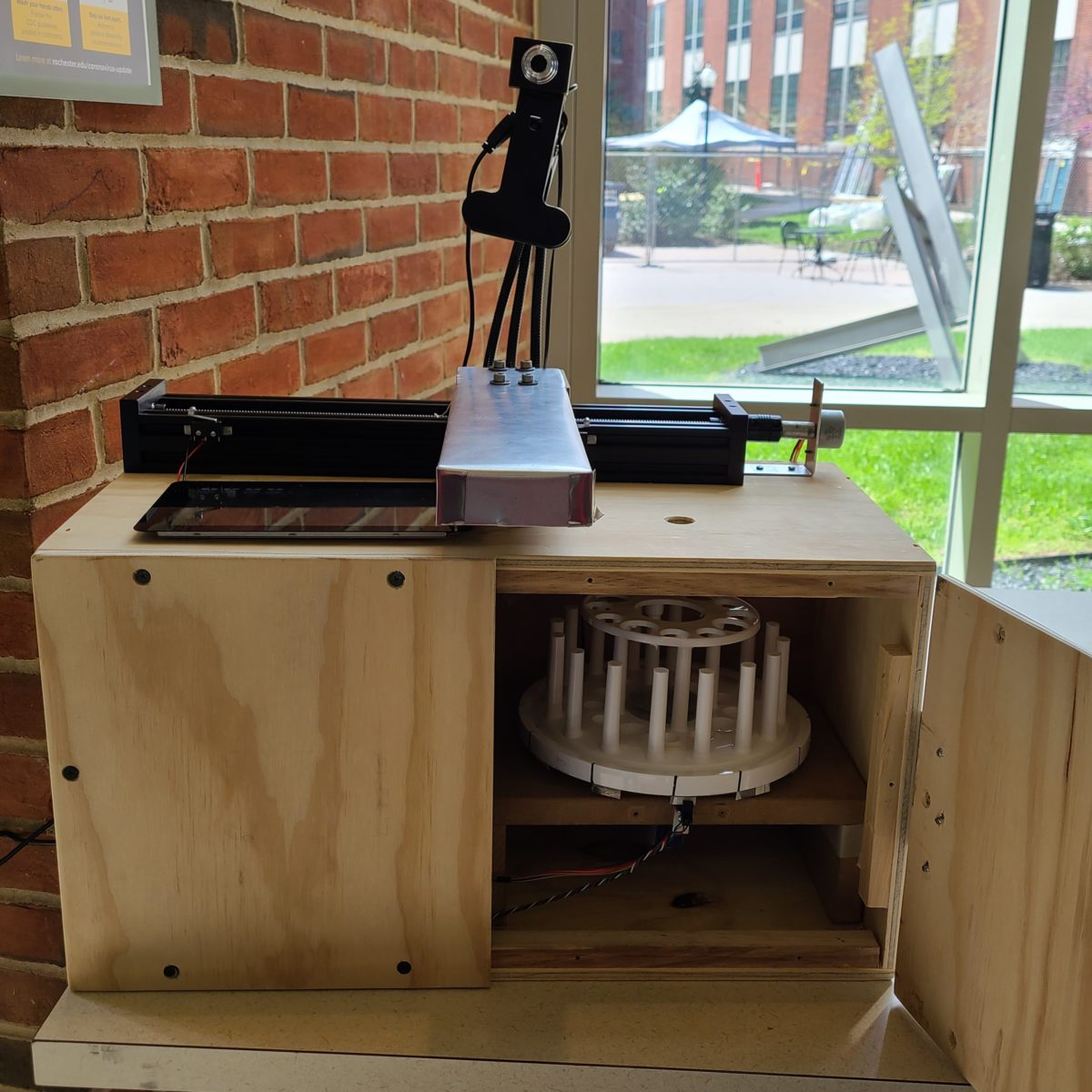
Health Care Test Station
A stationary unit designed to help facilitate the testing and storage of COVID-19 tests.
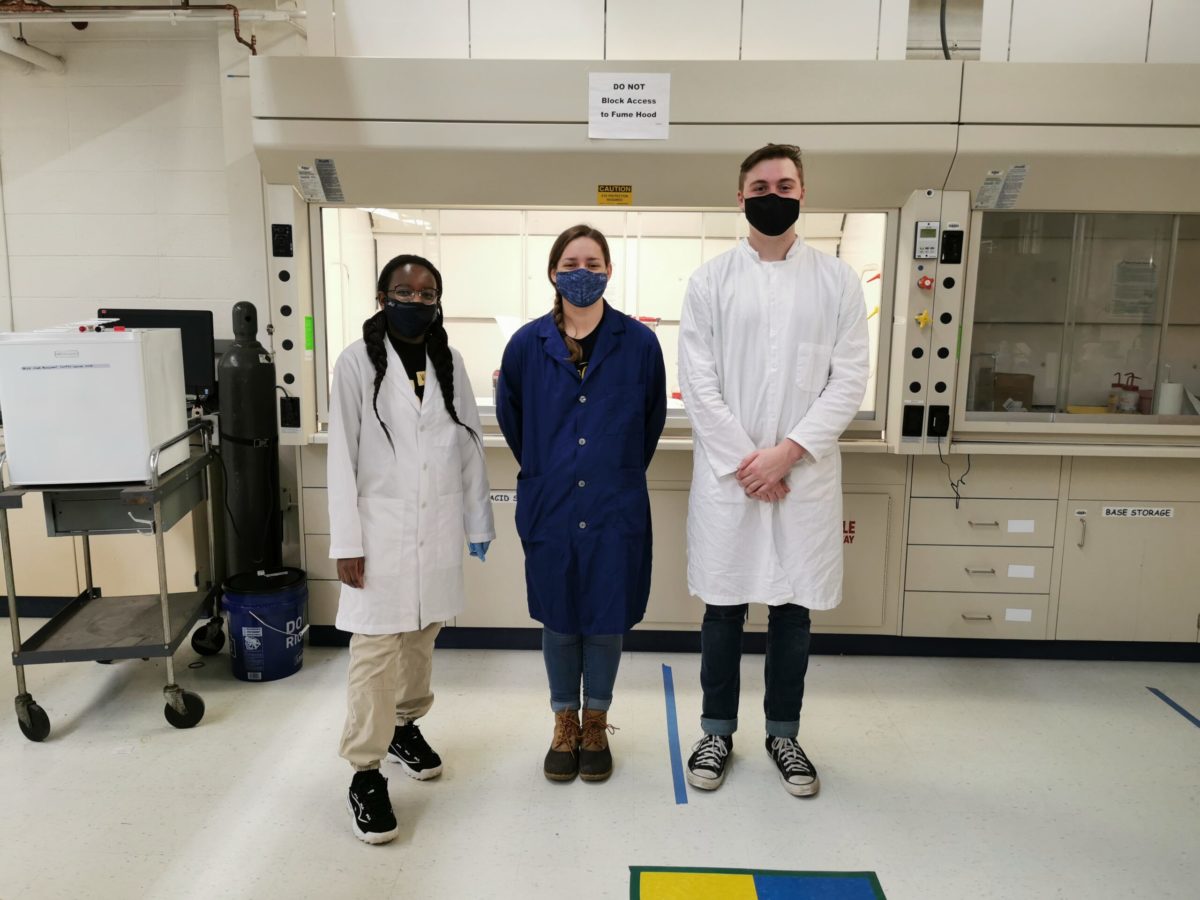
Separating PFAS from Landfill Wastewater
This project, sponsored by Waste Management, is interested in comparing two methods for the removal of PFAS from landfill leachate, foam separation and activated carbon adsorption.
Justin King, Ashley Sibanda, Claire Wilson
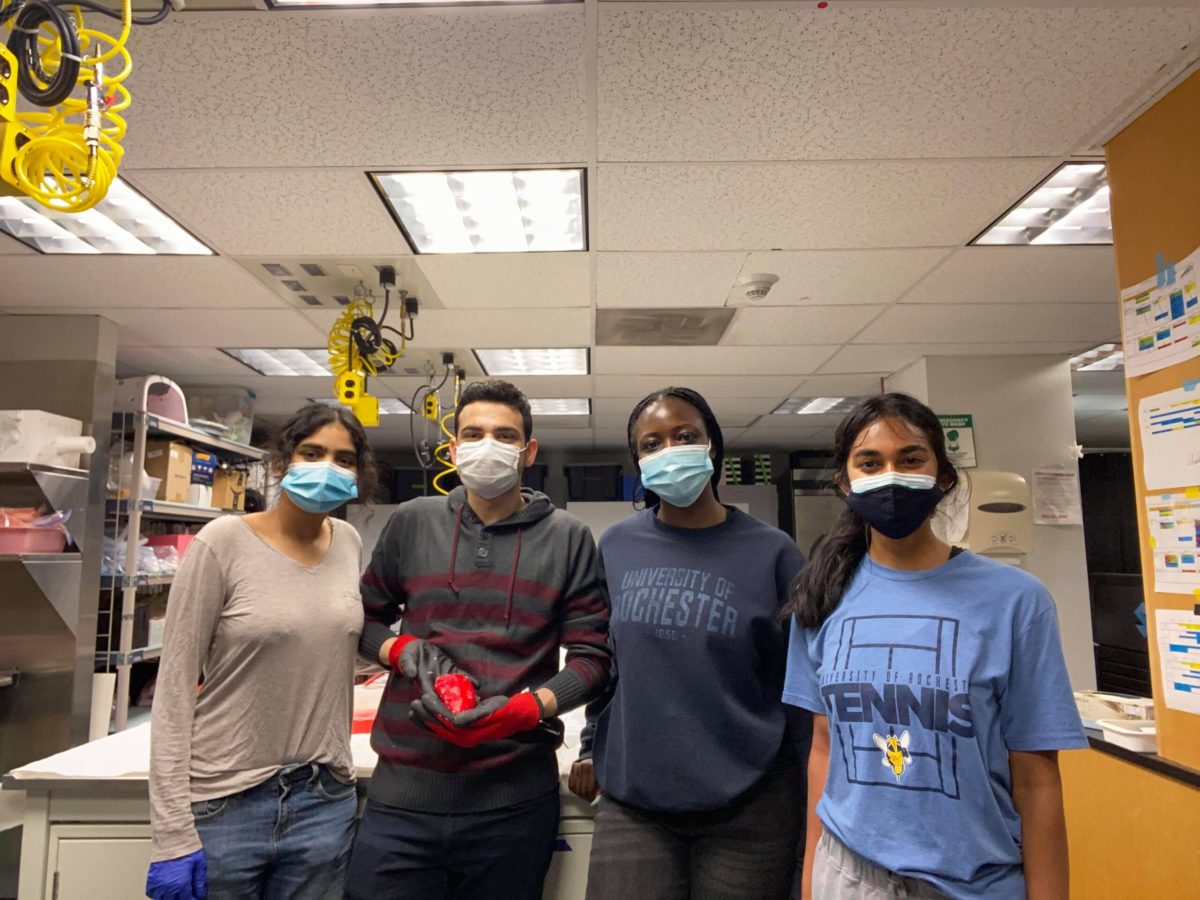
URMC Kidney Model Optimization
The URMC Kidney Model Optimization Project aims to create a polymer material that can simulate the human kidney for practice by surgical residents.
Bimpe Isafiade, Harshita Mahaseth, Natalie Ramesh, Baris Eser Ugur
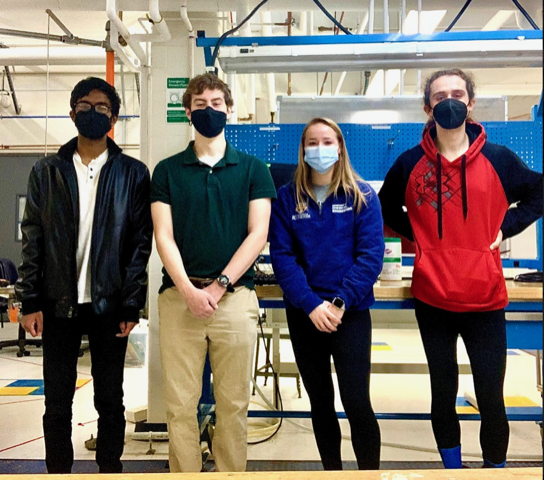
Accelerated Gasket Performance Characterization for India Mark II Hand-Pump
This project was to design an accelerated testing system for Harbec, Inc to evaluate gaskets in the India Mark II hand pump for installation by the Ugandan Water Project.
Dan Allara, Oion Akif, Paul Irving, Tessa Ludwick
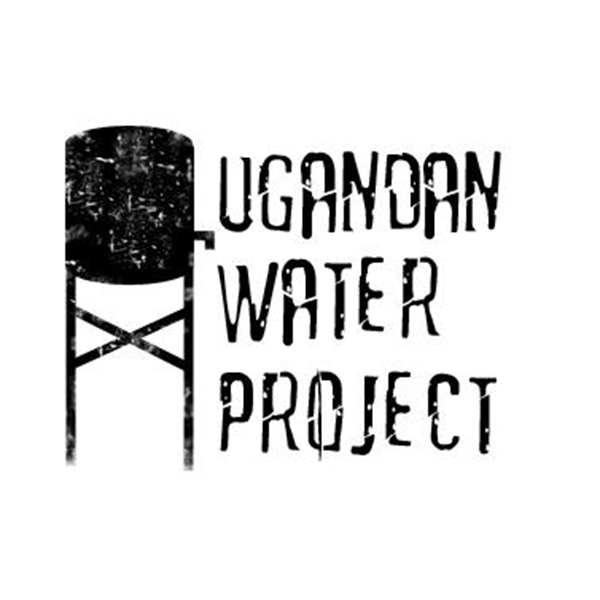
Ugandan Water Project
The main goal of this project is to build, assemble, and successfully test an accelerated testing machine for the India Mark II. In the India Mark II pump, the water gaskets wore off frequently during the pumping of water and needed frequent replacement which proved costly. To counter the problem, the project below proposes an accelerated testing machine composed of a slider-crank mechanism. The mechanism incorporated a flywheel driven by a motor that ensures continuous harmonic motion that replicates pumping mechanisms in the field. The mechanism was designed, simulated and a finite element analysis carried out in CAD software. These are covered in the report along with testing results and recommendations provided for improvement of future designs.

Development of polymers to simulate kidney tissues for surgical training of medical students at UR Medical Center.
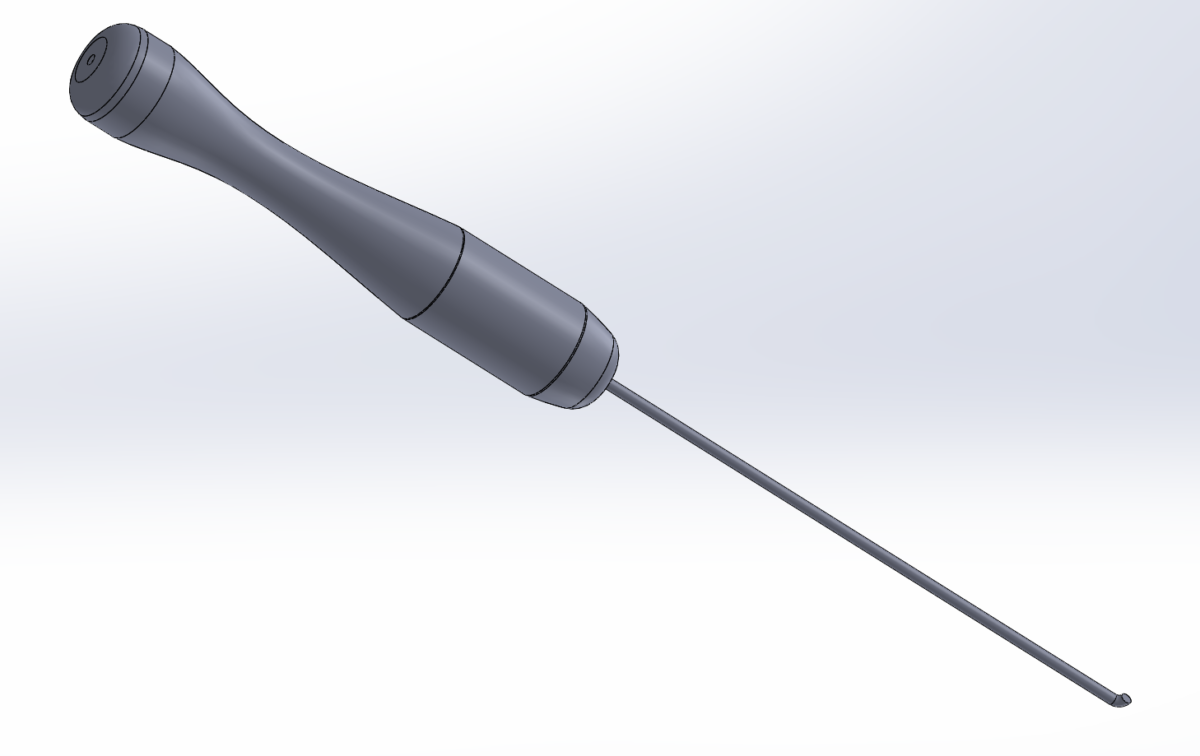
Cataract Surgery Device for the Developing World
Cataracts, a hardness and opacifying of the lens, is the leading cause of curable blindness worldwide, with the majority of cases occurring in developing countries where trained ophthalmologists are scarce. Our project is to develop a device to be used for a simplified cataract surgery that will insert a cylindrical intraocular lens into the cataract. By simplifying the procedure, more healthcare providers can be trained to perform the procedure, increasing the accessibility of cataract treatment in developing countries.
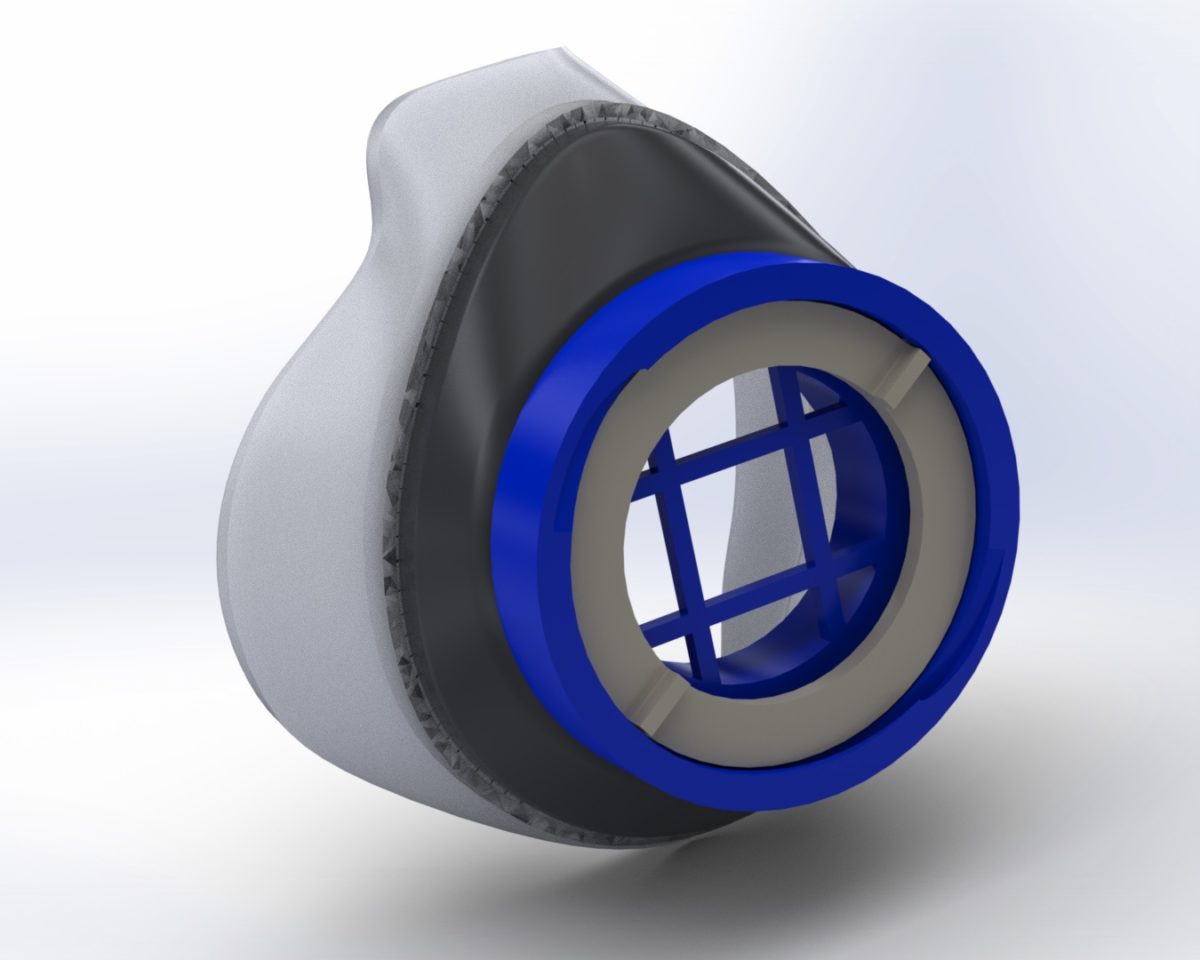
DIY COVID-19 Mask
In response to the COVID-19 crisis, we are developing a mask that offers superior function in a fraction of the manufacturing time when compared to many emerging 3D printed mask designs. The design offers an improved seal around the face that is more comfortable, a more robust/airtight filter housing, autoclavable materials, and a quicker manufacturing method. This will allow local and national entities looking to produce DIY masks a better, faster alternative to 3D printing.
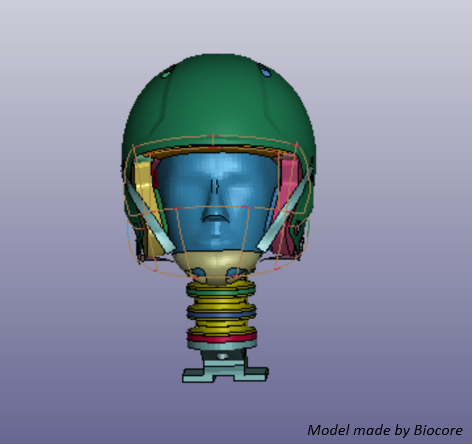
NFL Helmet Challenge
Helmets in the NFL are not effective enough to safeguard the health of the players. Players sustain concussions which can not only bench them, but leave life-long brain damage from the accelerations experienced during impact. As part of the project to improve the helmet, simulations were used to test material properties of different components of football helmets, such as hard foams, soft foams, and the shell. Data from the simulations were analyzed with performance metrics provided by the NFL.
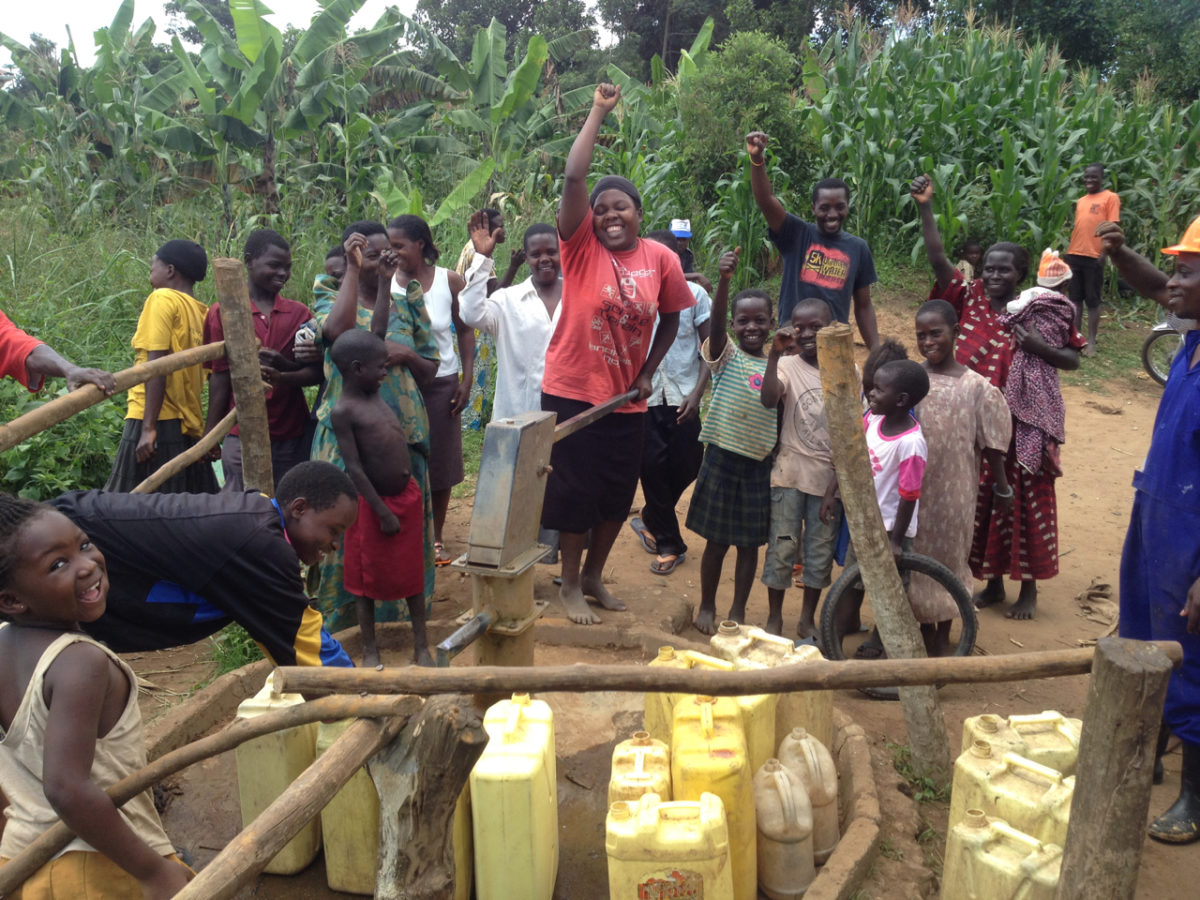
Ugandan Water Project India Mark II Tailpiece Design
Limit entry of abrasive sediment into India Mark II handpump for Ugandan Water Project.
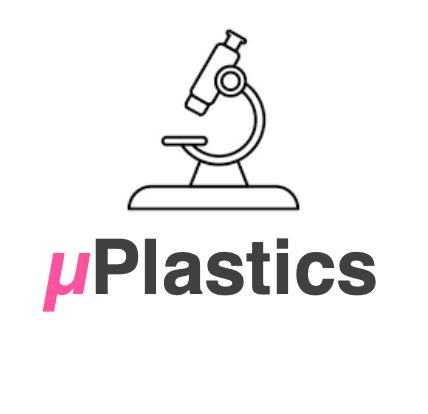
A Device For Identifying Microplastics
We are designing a device that will provide a cost-effective method for characterizing whether a particle in water is a plastic or nonplastic, as well as categorizing the subtype of plastic. The device will need to be effective on a scale of approximately one to five microns, which is the size of the microplastic particles.
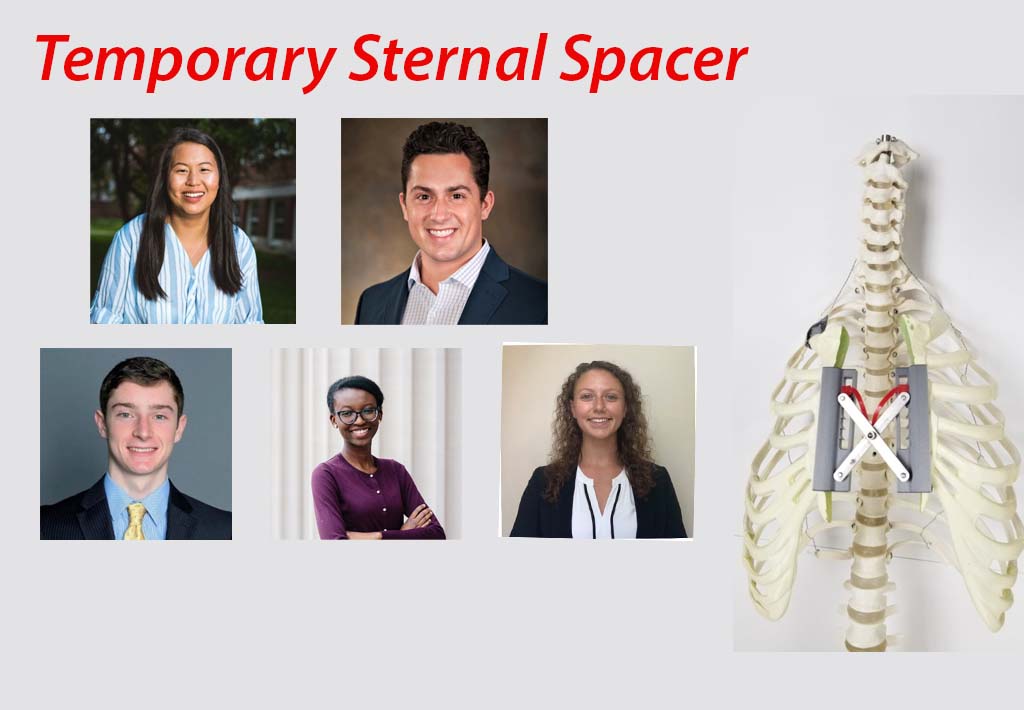
Temporary Sternal Spacer
Various post-operative complications may lead cardiac surgeons to opt for delayed sternal closure following open heart surgeries. Patients’ sterna are left open and they are cared for in the intensive care unit for 1-7 days. In the ICU, bedridden patients are turned to prevent pressure ulcers and for linen changes. During these turns, the sternal halves rotate and twist, potentially leading to injury or death. Our device stabilizes the sternal halves during transport and turning, greatly increasing patient safety.
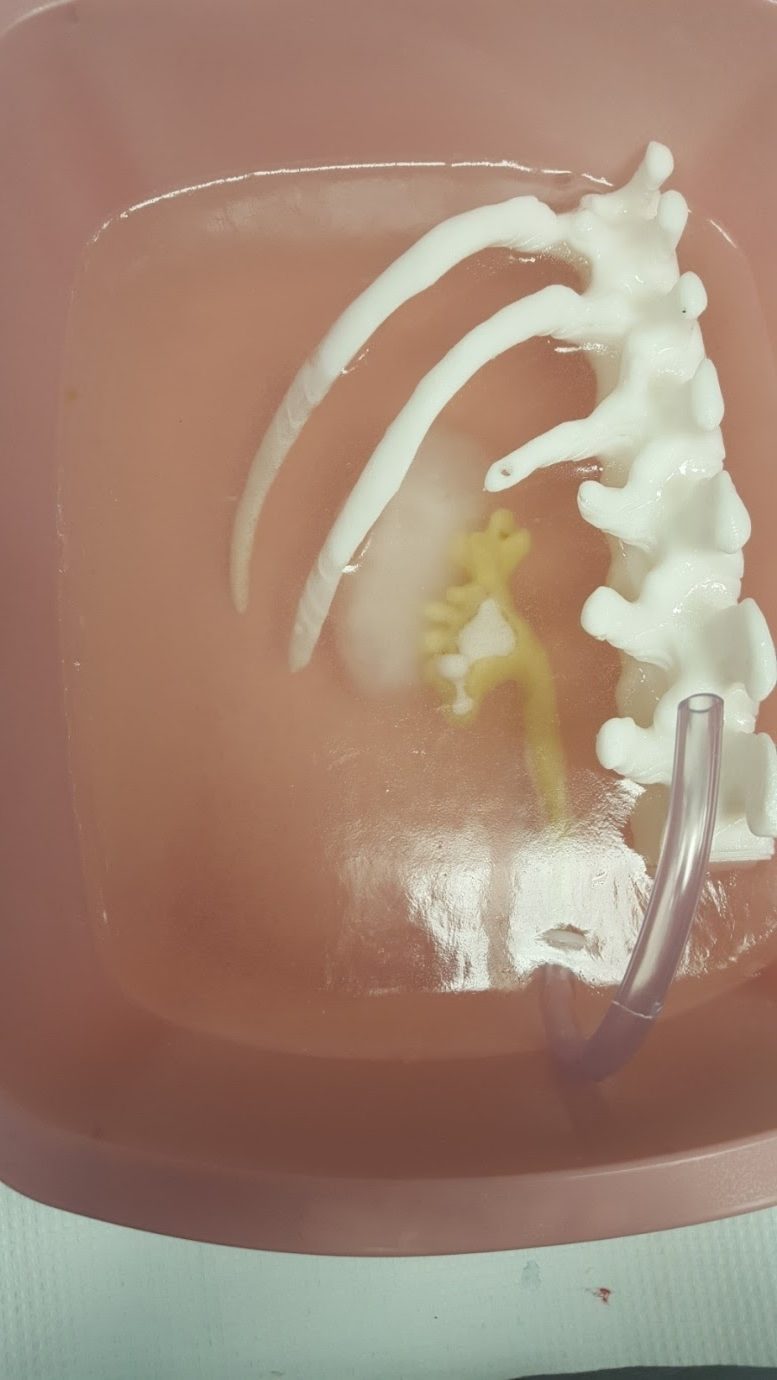
Investigating Materials for Simulating Percutaneous Nephrolithotomy Surgery
Identify Near Infrared transparent polymers to simulate human tissue for surgical training applications at UR Medical Center.

The Ten-μ HemoLock Clamp
Ten-μ solutions plans to introduce time and cost savings to the operating room (OR) through application-specific single-use instrumentation. Our instrument will allow surgeons to position and tension vessel loops at their discretion.

URMC-CTSI Networking Rhythm Badge Analysis
In this project, we want to apply DSC and machine learning techniques to identify and analyze group communication and interaction patterns from the data collected, e.g. “Who interacts with whom” and “Who attended which breakout sessions”, which can function as an indicator of team performance, group intelligence and meeting efficiency. We can further use the information to increase the productivity of Un-meetings by modifying related elements.
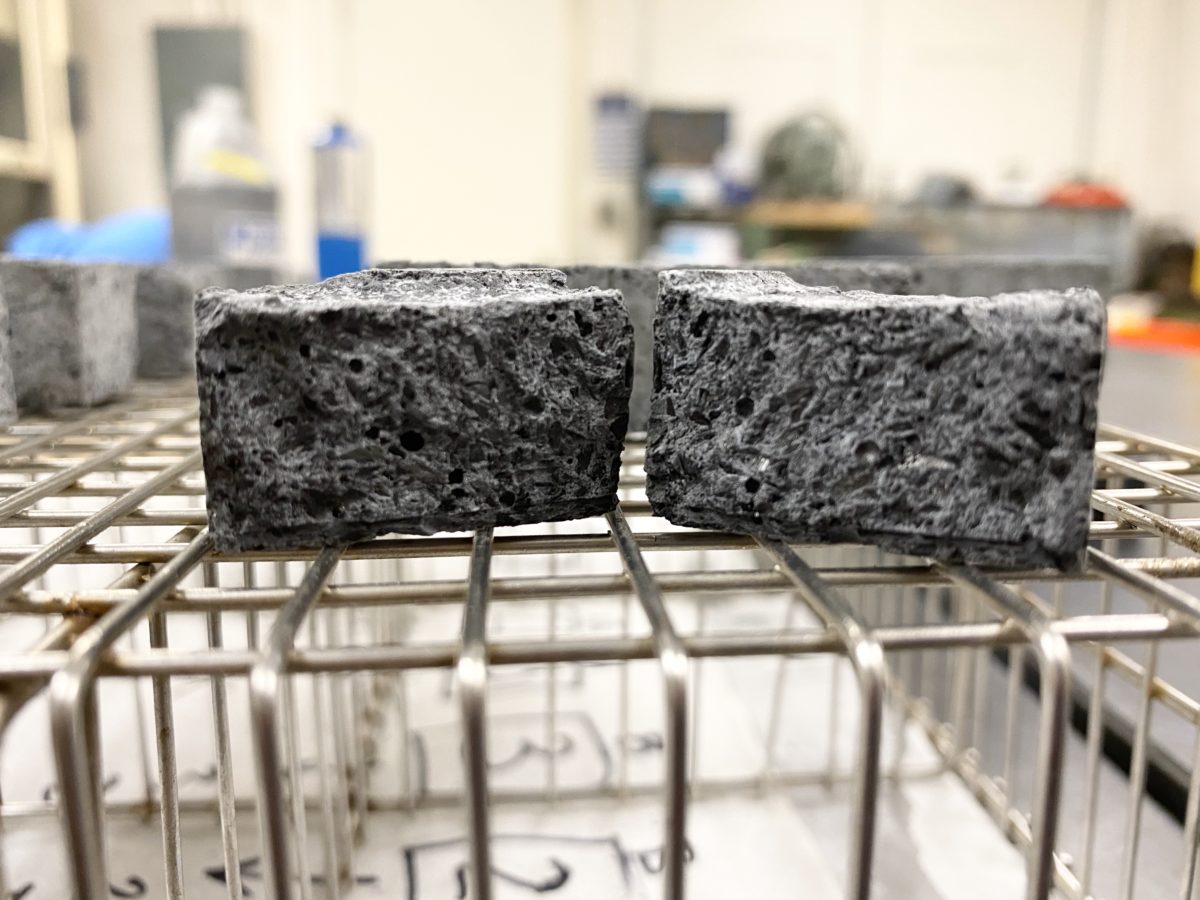
Biochar Bricks for Building Materials
Create building materials for developing countries from waste plastic and biochar, and compare to concrete standard.
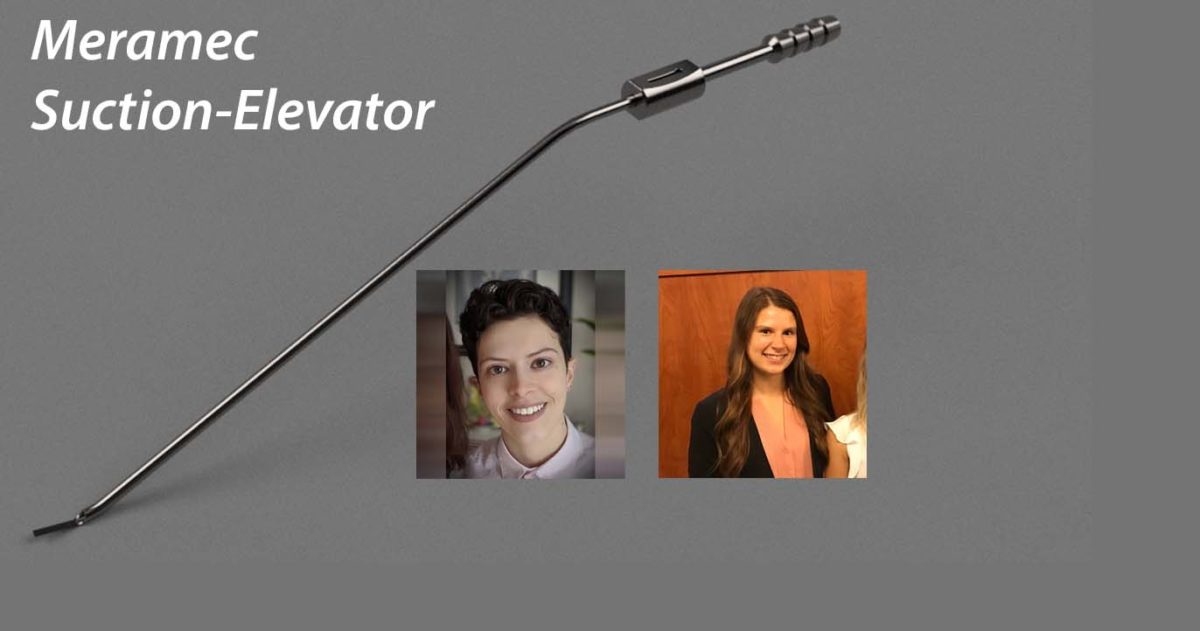
Meramec Suction-Elevator
For spinal surgeons who face difficulty visualizing the nerve root during spinal decompressions, the Meramec suction/elevator is a surgical instrument that combines multiple instrument functions to free surgeons’ hands and increase OR efficiency. It combines the functionality and familiarity of existing suction tips and manual elevators with end effector geometry specific to the lumbar nerve roots, reducing the need to switch instruments. This improves OR workflow and increases patient safety.
